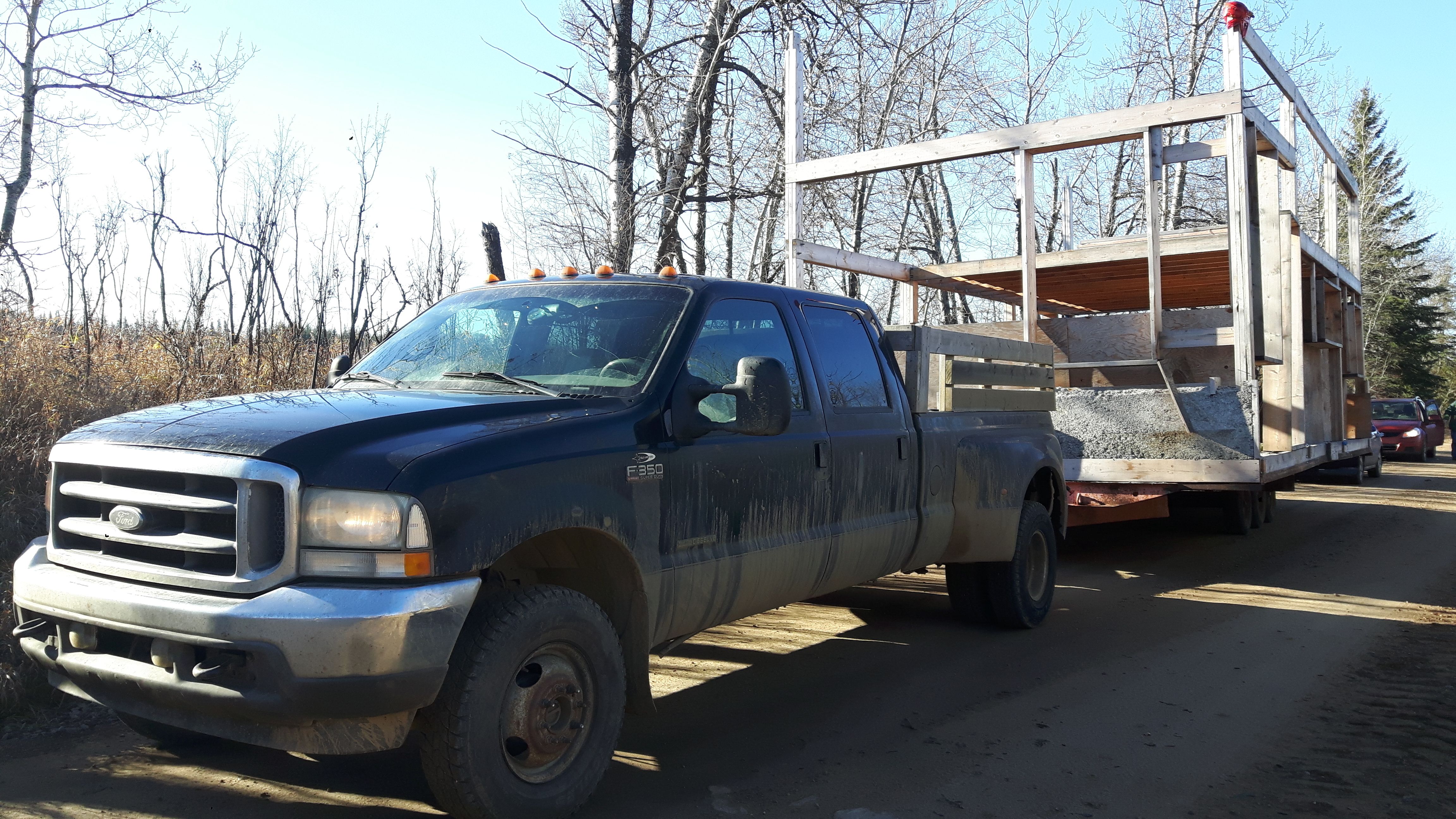
A very big step in living an off grid lifestyle is deciding upon what type of shelter you will use. Will it be permanent? Will it be semi movable? Will it be movable? What functions does the house need to serve in order to meet your shelter needs? And based on these criteria, what will you build it out of?
A year and a half ago my fiancé and I were faced with the need to examine these questions. We were both working for a farm, and living on the farm too. This was a new project for the owner and it was clear that this was really just a trial for him (although we were ensured a minimum two year trial of the farm model). Soon after the farm started up, another business that operated on the same property (a residential school for native girls) was closed down after an investigation. This business was the major income on that property for this owner and it was a huge financial blow (yes…there is so much in what I just said that may strike up feelings. Especially the part about it being a residential home and school for native girls. There is so much trauma that can be packed into the thoughts associated with this. I don’t want to continue without acknowledging this.). I came on board after the residential school had been closed down. There was talk about repurposing it as a bed and breakfast, or to host community learning events. However, the financial blow meant that within 6 months of officially opening, the farm was again being closed down. The owner was stressed financially and we felt it regularly. We were run down from not having the staff that were promised (no money no staff), and were paying out of our own pocket to feed the farm’s animals (the owner would regularly not provide the funds for feed on time which meant we personally carried that cost). In the end the word that came that he was pulling out of the farm wasn’t surprising, but was quite the blow to our stability.
We put our heads together and evaluated our goals and priorities. At that time we both wanted to be off grid and homesteading. Although our lifestyle was very close at that time, we were still relying on outside employment (the farm we both worked for) and were very much on the grid. But…we didn’t have any land to move onto and buying wasn’t yet an option for us. We decided that building ourselves a shelter would be a wise investment. It would need to be semi-movable as it may end up following us wherever we went.
My fiancé had taken a hempcrete building course years before and we started to think about what it might be like to have a hempcrete house on wheels. One we could build and then move to any land we eventually bought.
For those who haven’t heard of hempcrete before (which is likely many of you), it is very much like concrete in theory. Instead of aggregate mixed with Portland cement and hydrated lime, hemp hurd is used. Hemp hurd is the woody stem of the hemp plant that is broken up into pieces and has many uses, especially on my farm. Hempcrete is super solid (depending on your mix it is up to 6 times stronger than concrete), rot resistant, fire resistant, and 4 times lighter than concrete. Hempcrete is casted into molds like concrete and it tamped down to make a solid wall structure. It can be molded into any shape and sets quickly. It doesn’t take much by the way of training to use, and can lead to quickly erected and livable homes.
Hemp is the material we chose for many reasons, however, its ability to hold and store heat as a thermal mas made it the winner for our home. To make the home semi-movable, we purchased an old hay wagon from a friend for a steal of a deal. It needed some welding to reinforce it, and a couple of new tires, but it would be able to hold the finished weight of the house with the support of RV jacks along the outer sides of the house. Even better, because the axle will never be removed from this house, it isn’t table as a house and building codes do not apply.
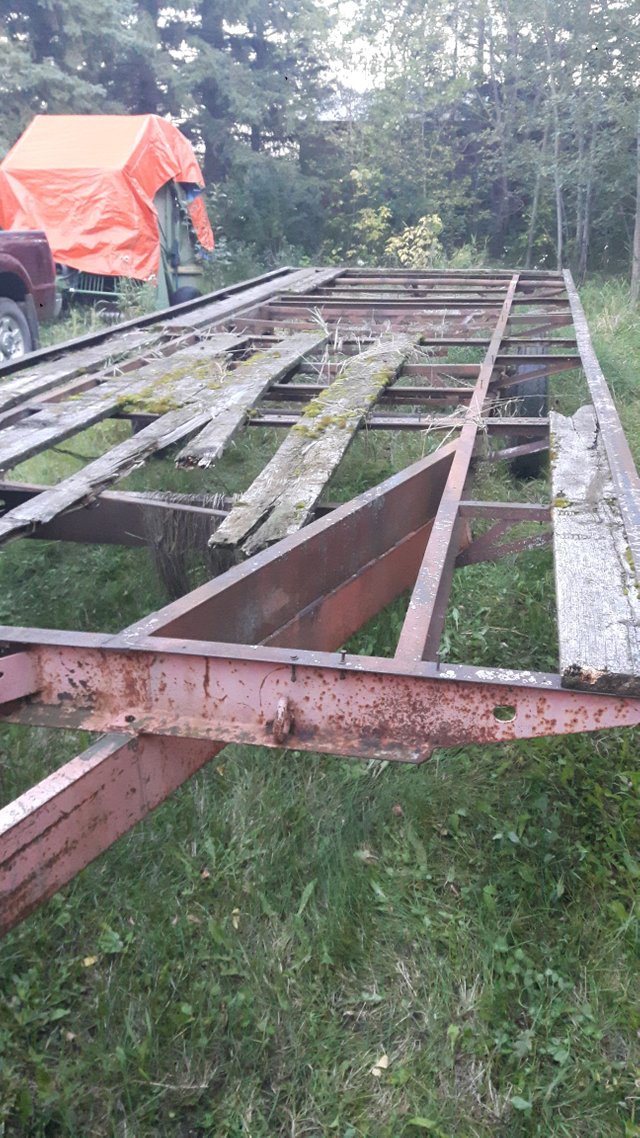
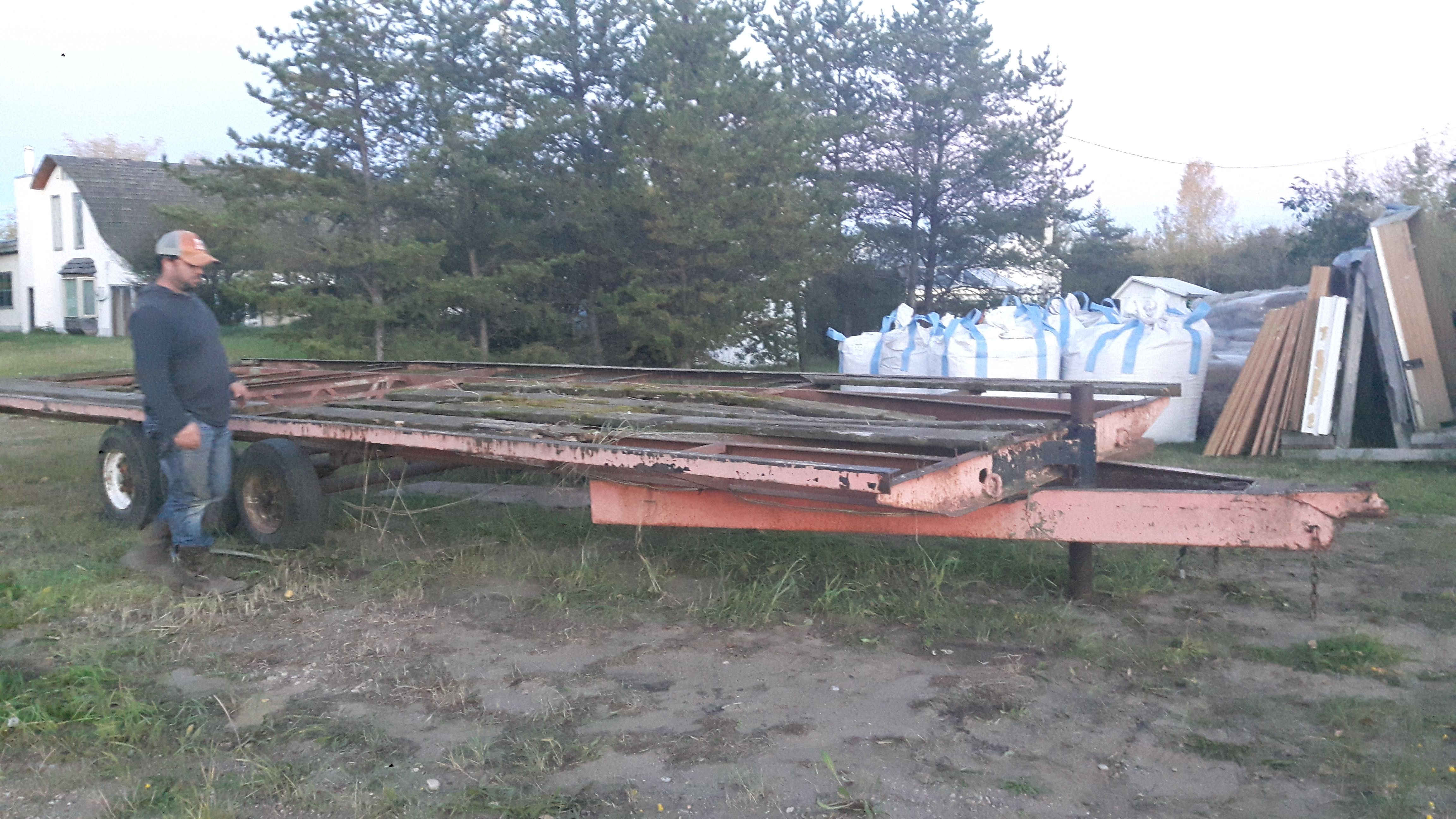
After welding the trailer frame to both increase its size and strengthen it, we laid down a subfloor made of metal siding. This would keep out pests.
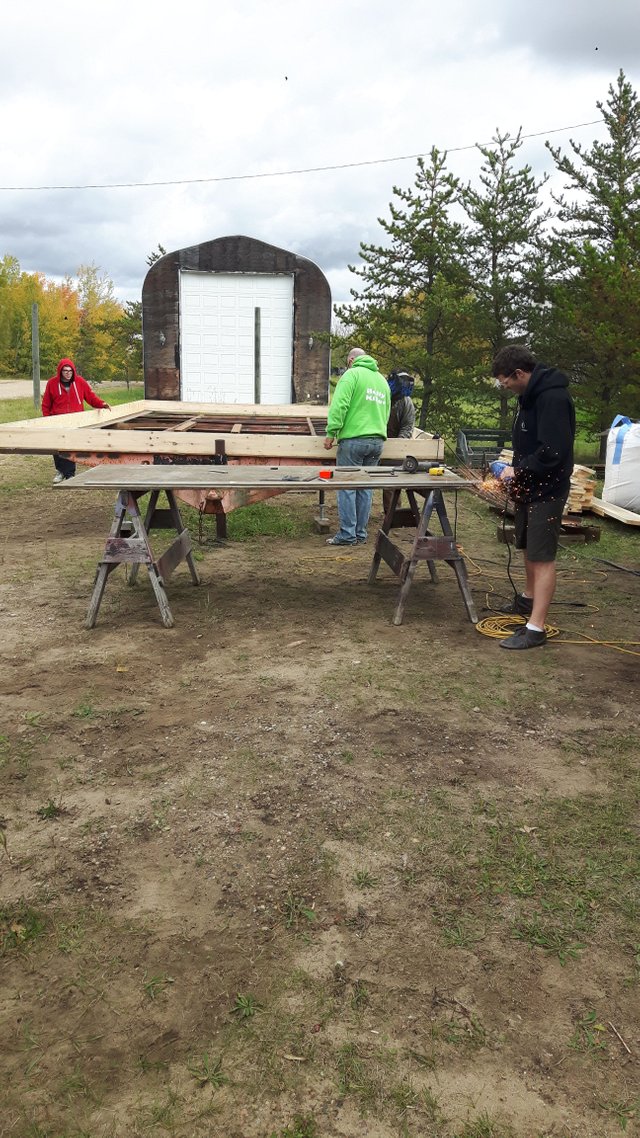
On top of that we used styrofoam insulation (metal and hempcrete should not directly touch as it encourages condensation and eventual weakening of the hempcrete over decades. The skeleton of the building is a laminated post and beam structure. The house is designed to be just under 500 square feet with a main floor and bedroom loft. The house will have an indoor bathroom with composting toilet (which is a bucket that can be emptied from the outside of the house), a full kitchen, a small livingroom/dining room, and two bedrooms upstairs. From start to finish, including the building materials, trailer, and fixtures, the total cost of the house will be between 12,000 and 15,000 dollars.
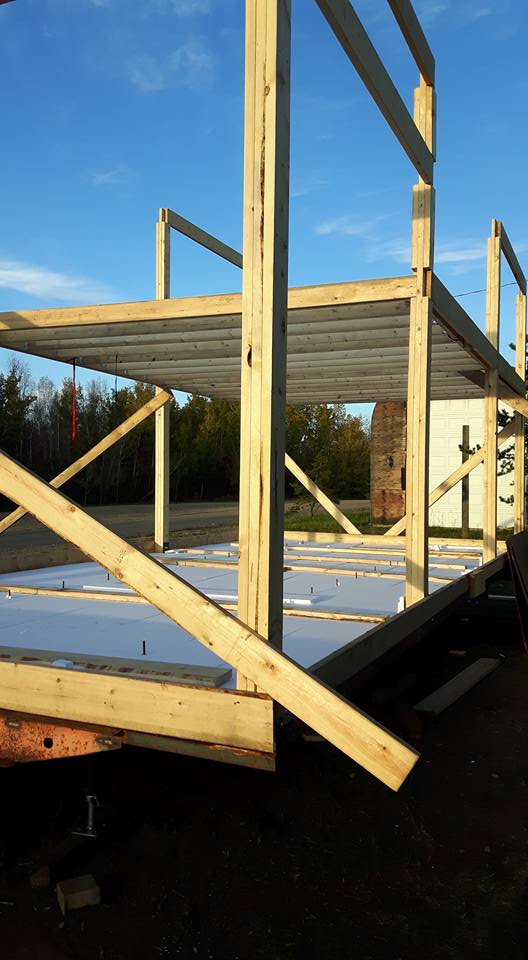
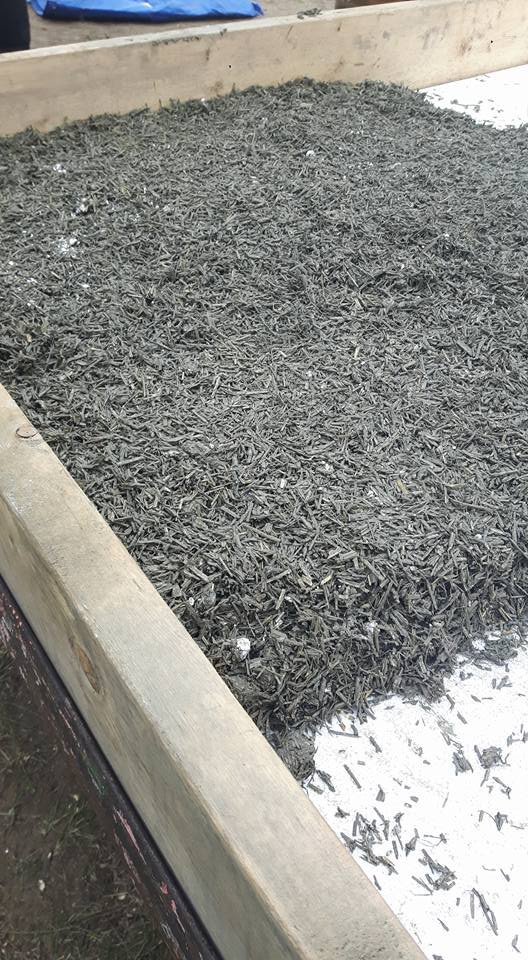
Once we had the layer of foam insulation down, we began casting hempcrete. Hempcrete is typically 12 inches thick (or more). The use of hempcrete as a flooring is a bit more novel than using it for walls, however, with a thin layer of denser cement on top, and a earthen plaster finish or terra cotta tile, it will suit this home just right. Within the hempcrete floor we have run in floor heating line. This line will be attached to a hot water jacket on our wood burning stove. This along with the stove will charge the home with heat which it can then release back into the living space when the temperature drops at night.
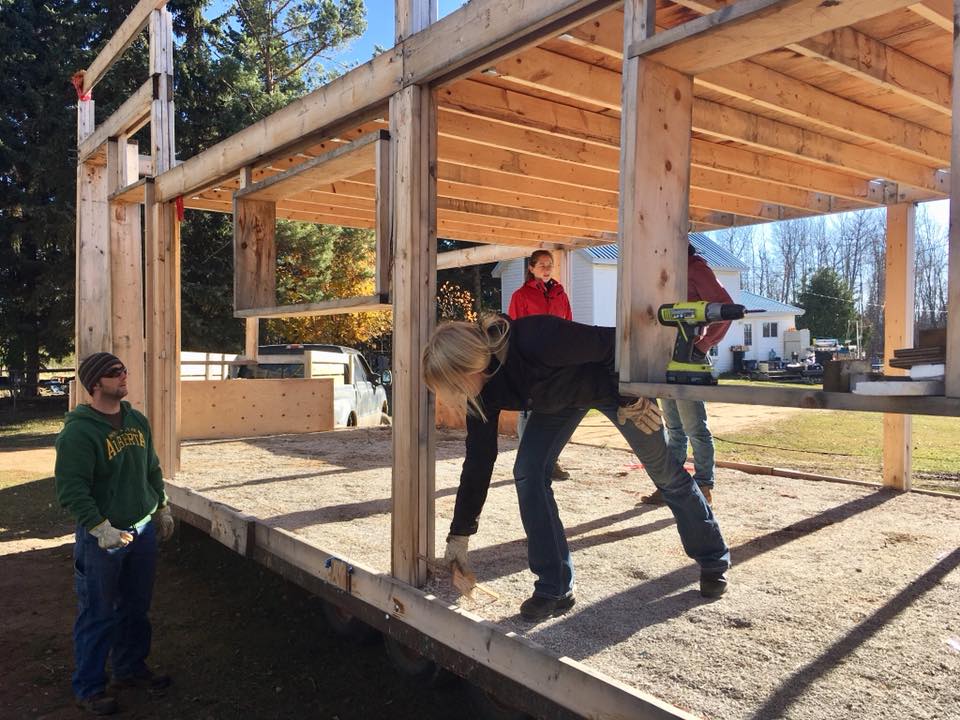
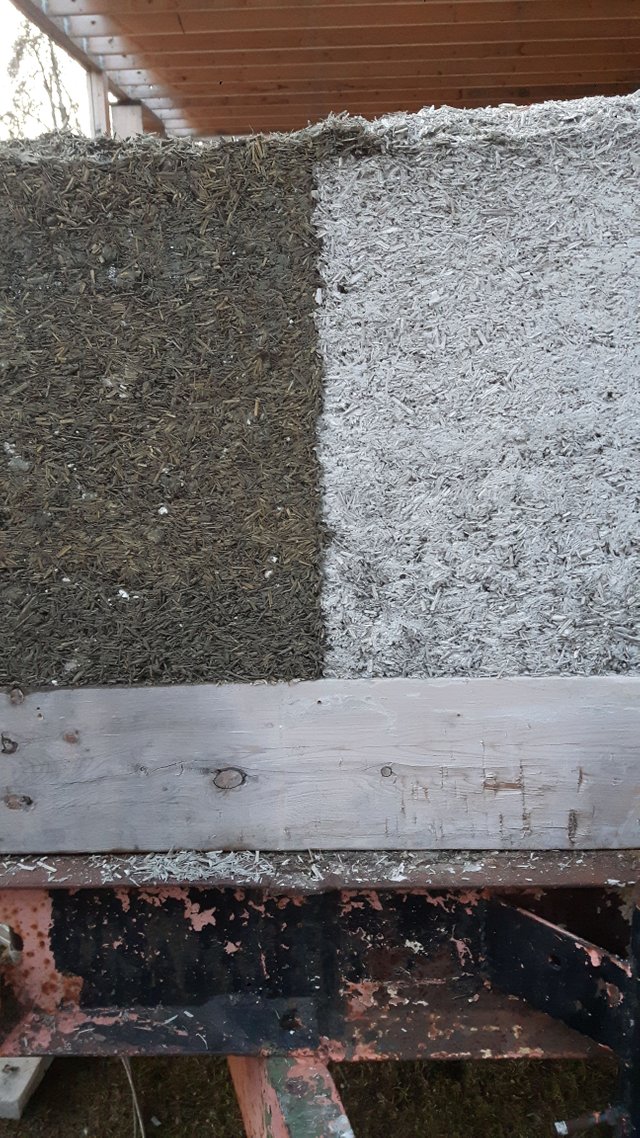
Once the floor was completed, door and window frames were installed. A pony wall (the beginning of the eternal hempcrete walls were erected with the help of some hempcrete workshop participants a few months ago. The next step is to reinforce the loft and put the roof on the build with the help of some lovely neighbours including @wwf.
From there, in the spring, we will be able to finish the external walls and install the doors and windows. However, in the meantime, we will be beginning to prepare the land for our arrival. In May we will be moving to a new piece of land close by. This land is raw, with no amenities, utilities, or even fences. We will be building this homestead from the ground up.
The first order of business will be to install the driveway, which will allow us to move the home before it is fully completed (allowing us to level the trailer and set up the jacks before the full house is finished, thus reducing the weight of the house when it is moved to its final roots).
Building this home has been an adventure in community building. Although we absolutely could have had others come in and build the home quickly…it would defeat the purpose. Building our own shelter is not only going to result in a home, it is giving us the skills to create shelter for ourselves and others within our community. Each time we have a new section of the house to complete, we invite community members to come and learn. In exchange for the knowledge and experience, we receive help on the hempcrete haywagon home.
This house has helped connect me with so many of the people who I would now call my tribe. People who have helped us build, and followed our journey along the way. We are blessed that this life, and each aspect of building it, has been an opportunity to share with our community and in some cases to even inspire others to fallow in these footsteps.
Although we are in the depths of winter at present and the home sits in our yard, I know that soon the spring will return and our home will once again be the center of community building and reskilling. And that warms me.
And, at this time next year, I will be sharing homesteading musings from within the hempcrete home, sitting my our wood burning stove, reveling in the experiences we have collected along the way.
From my home fire to yours, hai hai
Thanks for the (very nicely presented) information.
"metal and hempcrete should not directly touch as it encourages condensation and eventual weakening of the hempcrete over decades. "
Brings to mind another easy overlooked fact.
Oxidation
Take note of the galvanic series when using screws on metal.
Some combinations of the galvanic series DO speed up the oxidation process.
Avoid mixing these.
Thinking of metal,
A Faraday cage could be a nice addition to this nice house.
Cheers
Downvoting a post can decrease pending rewards and make it less visible. Common reasons:
Submit
Hey there! Thanks for your input. Yes, there are many things to consider when playing tetris with materials to build a house! Makes it a fun process.
Downvoting a post can decrease pending rewards and make it less visible. Common reasons:
Submit
Hemp ❤
Downvoting a post can decrease pending rewards and make it less visible. Common reasons:
Submit
yes, please keep us updated on who it goes. There is so much to be learned from watching the steps other go through on a project.
Downvoting a post can decrease pending rewards and make it less visible. Common reasons:
Submit
I sure will! I will also be building other structures with hempcrete this year. Many exciting projects!
Downvoting a post can decrease pending rewards and make it less visible. Common reasons:
Submit
Congratulations @harvardhomestead! You have completed some achievement on Steemit and have been rewarded with new badge(s) :
Click on any badge to view your own Board of Honor on SteemitBoard.
For more information about SteemitBoard, click here
If you no longer want to receive notifications, reply to this comment with the word
STOPDownvoting a post can decrease pending rewards and make it less visible. Common reasons:
Submit
Saluton, your friend brought me to you, but now ist time for bed. Your post looks so promising. I will come back.
Downvoting a post can decrease pending rewards and make it less visible. Common reasons:
Submit
Welcome! Thank-you for taking the time to check out our journey. I wish you a restful night!
Downvoting a post can decrease pending rewards and make it less visible. Common reasons:
Submit